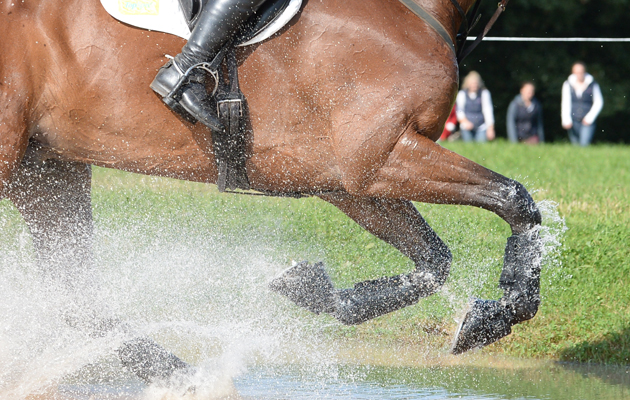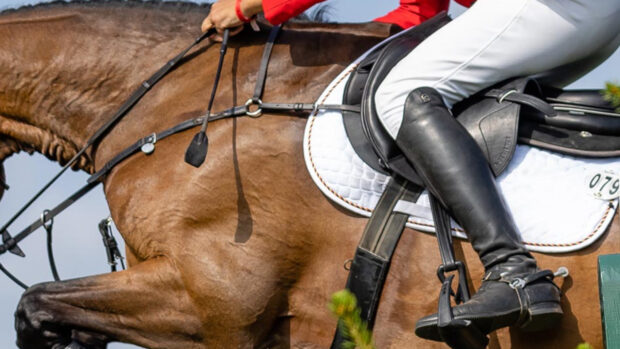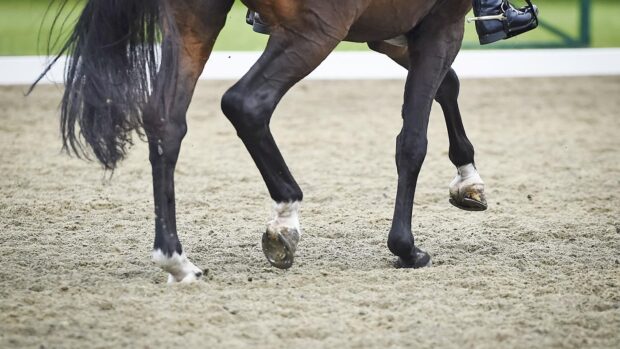New rules on whip use and blood on the horse have been put forward as part of the FEI’s proposed eventing rules for 2019.
The international governing body for equestrian sport has appeared to try to tighten up the rules regarding abuse of the whip and the resulting penalties available to ground juries.
This is the first draft of rule changes for next year and will be consulted on by national federations and other stakeholders before a second draft is published in the autumn. These are then finalised and voted on at the FEI’s general assembly in November and, if approved, will come into force on 1 January 2019.
The proposals reduce the amount of times the whip is allowed to be used for any one incident, from three to two, and misuse of the whip can now include multiple excessive uses between fences.
The FEI has added a line, stating that if a horse’s skin is broken or has visible marks, the use of the whip will always be deemed to be excessive.
It has also changed to wording of the rule, article 526.3, to state that excessive and/or misuse of the whip is “not limited to” the nine scenarios it lays out.
A note from the FEI eventing committee explains the whip rules have been “reviewed to allow stricter options for ground jury decision on cross-country”.
All cases of excessive whip use will automatically be sanctioned with a yellow warning card or stronger sanctions, if these changes are approved.
Rules surrounding “athlete induced blood” on the horse have also been updated.
A statement from the eventing committee clarifies that this stems from “incidents during events and [the] decision of the [FEI] bureau in June 2018 to line up [blood rules] with dressage and jumping for the respective tests”.
Should these proposals be accepted, the ground jury will be able to stop a combination during their dressage test if they spot blood on the horse. If the horse shows fresh blood, he will be eliminated.
On the cross-country, the ground jury will consult with the vet over minor cases of blood in the mouth or minor bleeding, on a case-by-case basis.
For the showjumping phase, horses with blood on the flanks or bleeding in the mouth will be eliminated. Officials can authorise rinsing or wiping of the mouth in minor cases of blood in the mouth, for example where a horse appears to have bitten his tongue or lip, but any further evidence of blood will result in elimination.
Article continues below…
You might also be interested in:

Blood and whip rule changes in store after high-profile cases
The eventing committee is considering proposals to ‘provide clarity’ for all involved in the sport

Latest blood rules update: what you need to know
The FEI has decided against introducing more discretion in blood rules after extensive consultation with national federations
These new proposals also tie in with suggested changes to yellow warning cards and recorded warnings.
“Recorded verbal warnings” would be changed to simply “recorded warnings”, if the proposals are accepted, and automatic suspensions of riders given more than one yellow card in a year have been increased from two to four months.
“All cases of minor blood on horse caused by the athlete either in the mouth or on flanks from spurs shall be sanctioned by a recorded warning as a minimum or by stronger sanction(s),” states the proposal.
“All cases of excessive use of whip, as defined above, shall automatically be sanctioned with a yellow warning card or by stronger sanction(s).
“A yellow warning card will be systematically awarded if the athlete continues after three refusals [on the cross-country].
“Should the same athlete receive more than one recorded warning for a case of athlete induced blood on a horse within three years, he will automatically be issued a yellow warning card.
“Two recorded warnings for the same offence will result in a yellow warning card.”
For more information and reaction to the proposed 2019 FEI rule changes and 2020 Olympic formats, don’t miss next week’s issue of Horse & Hound — out 19 July.




